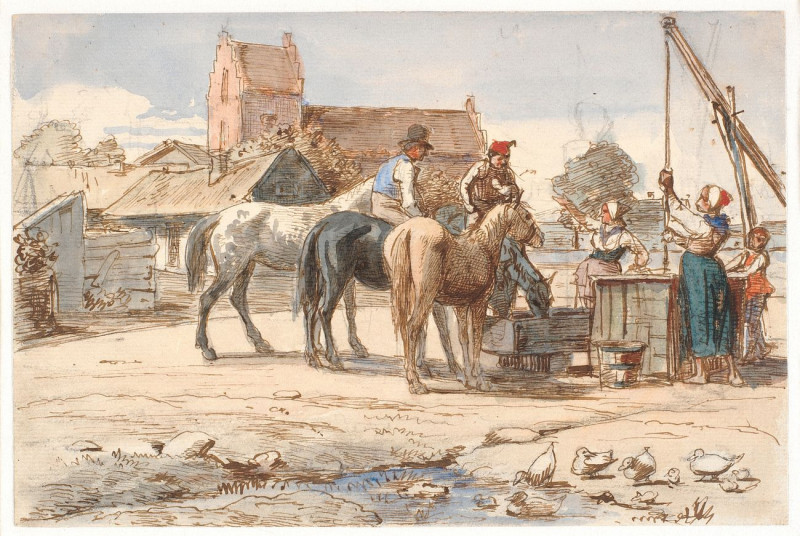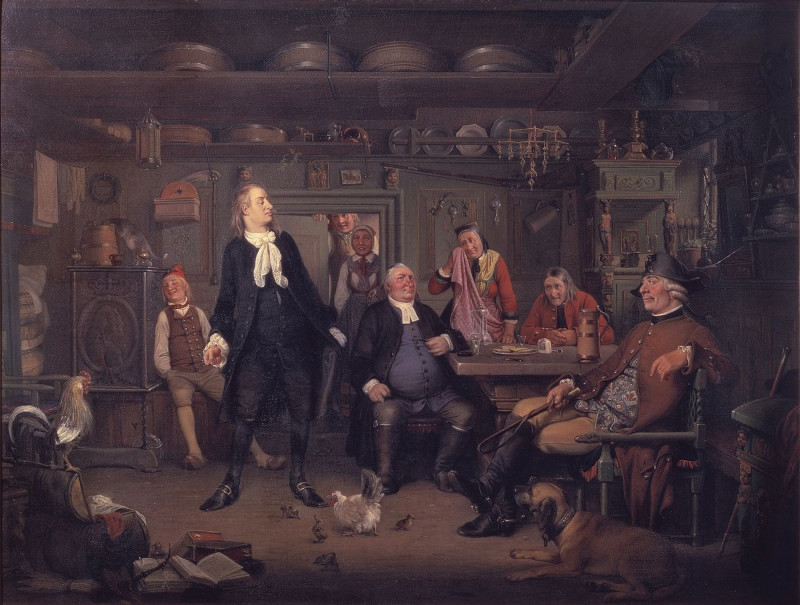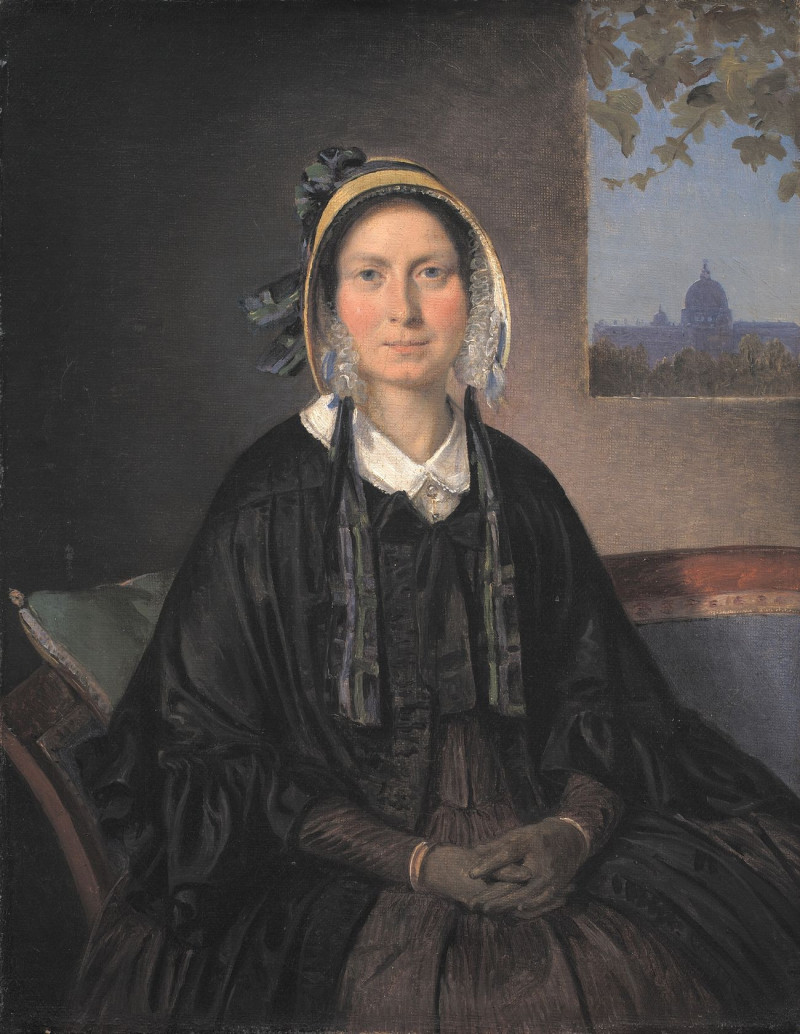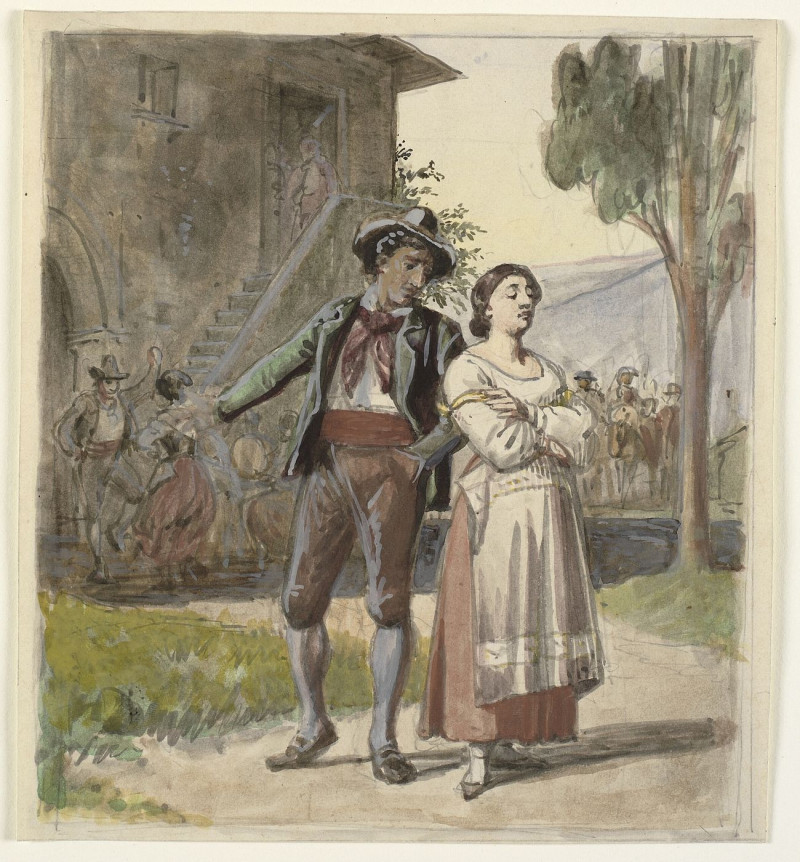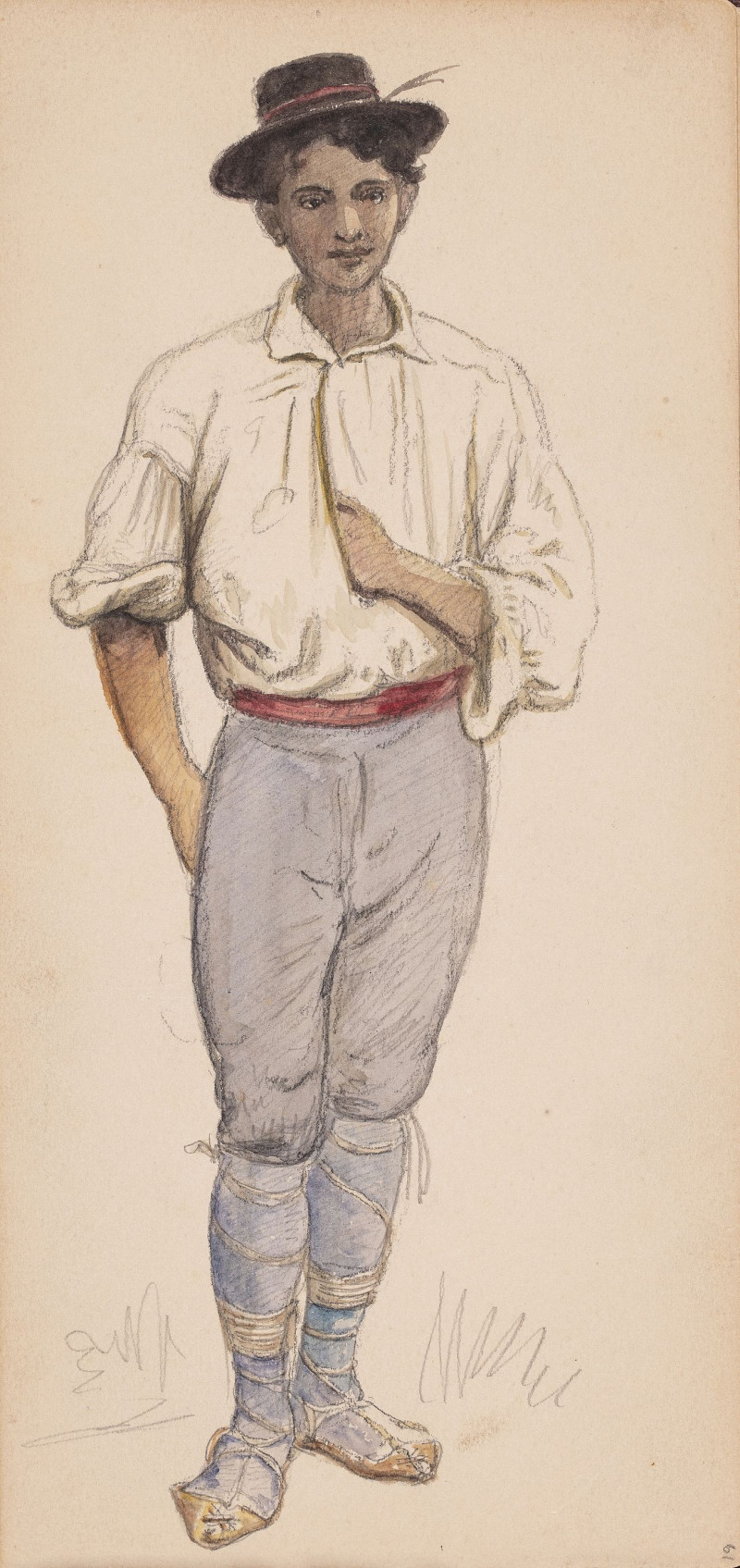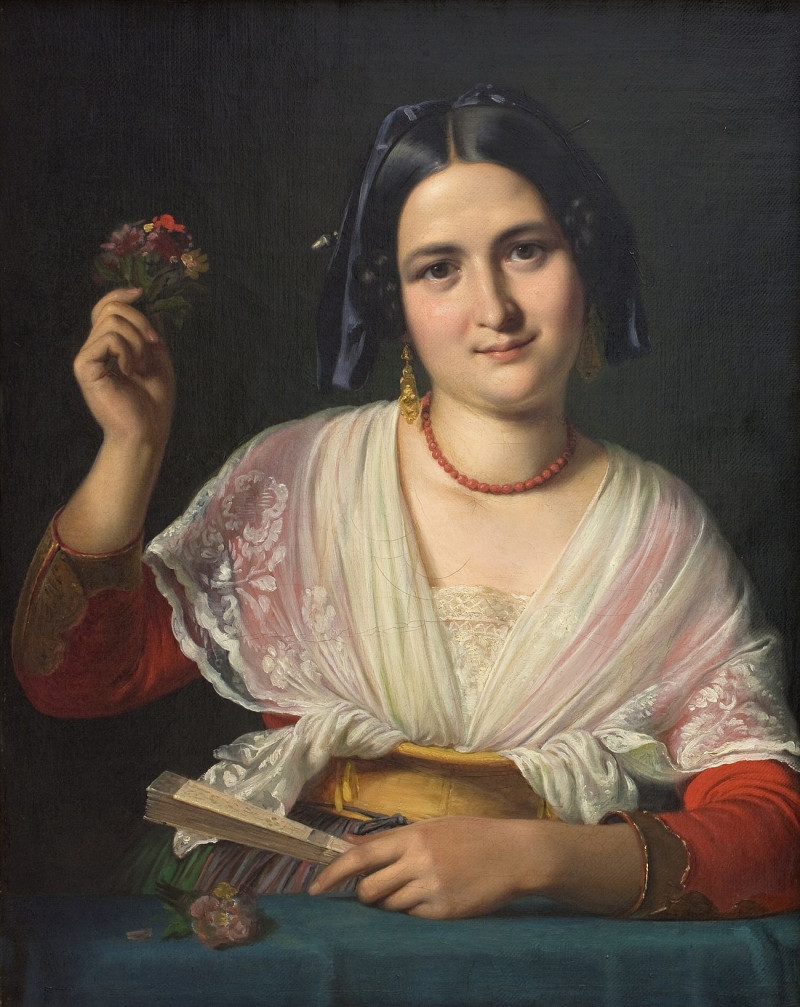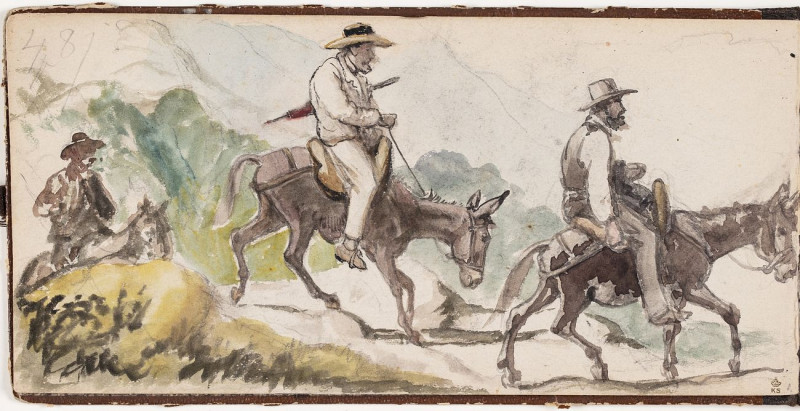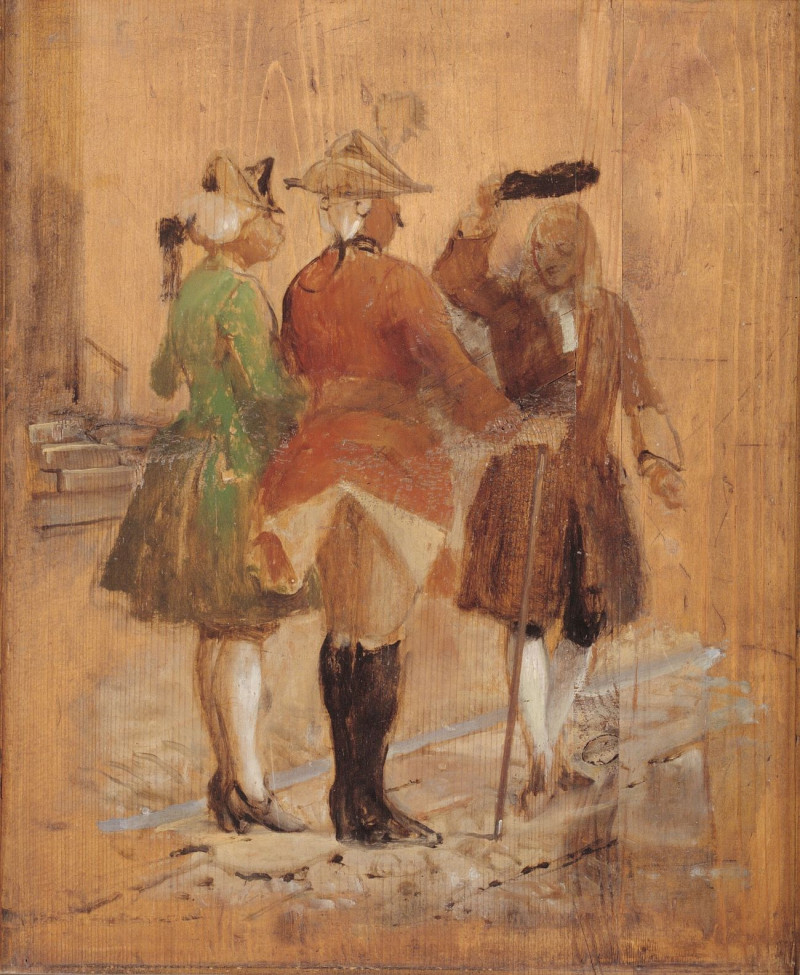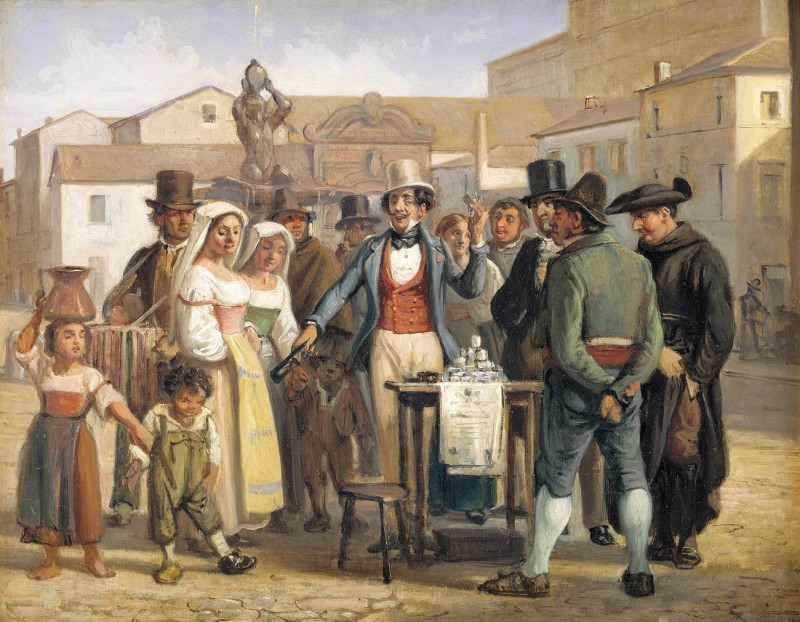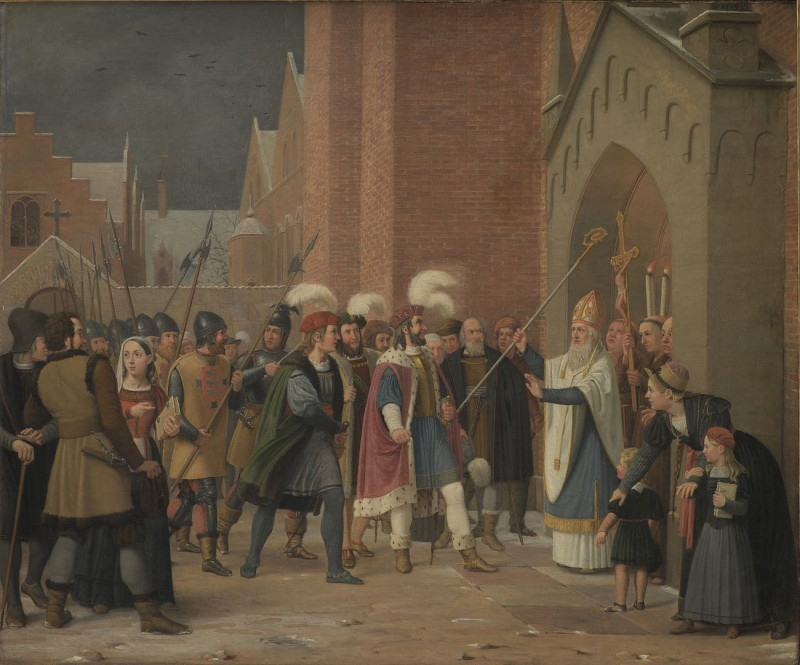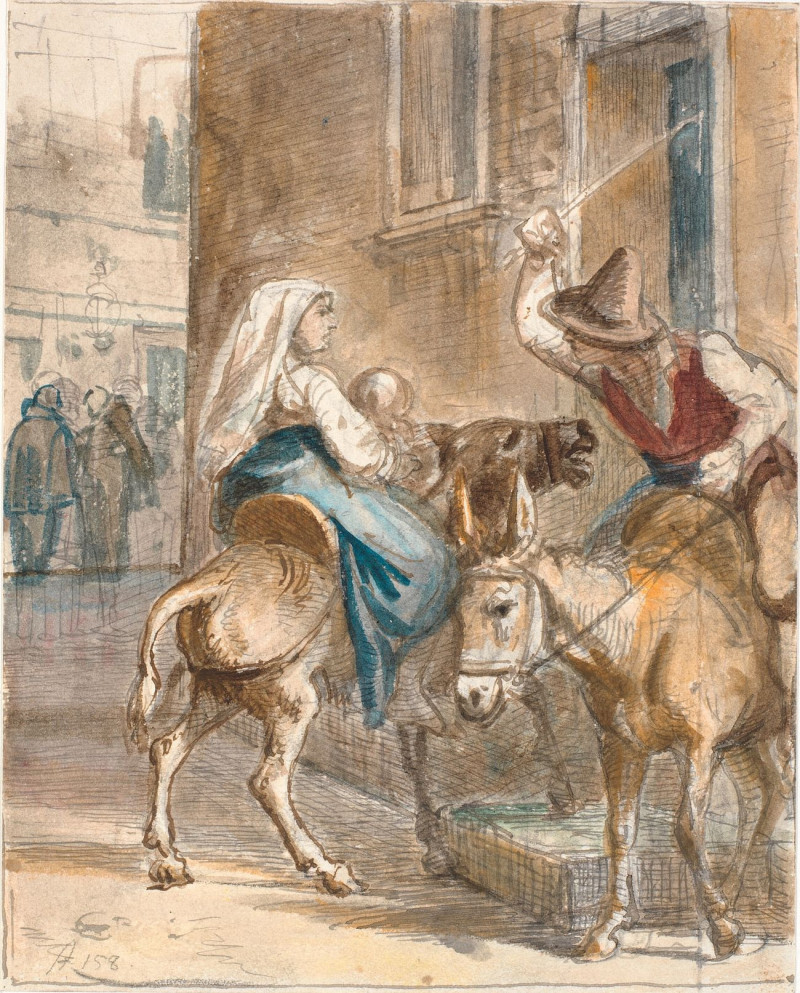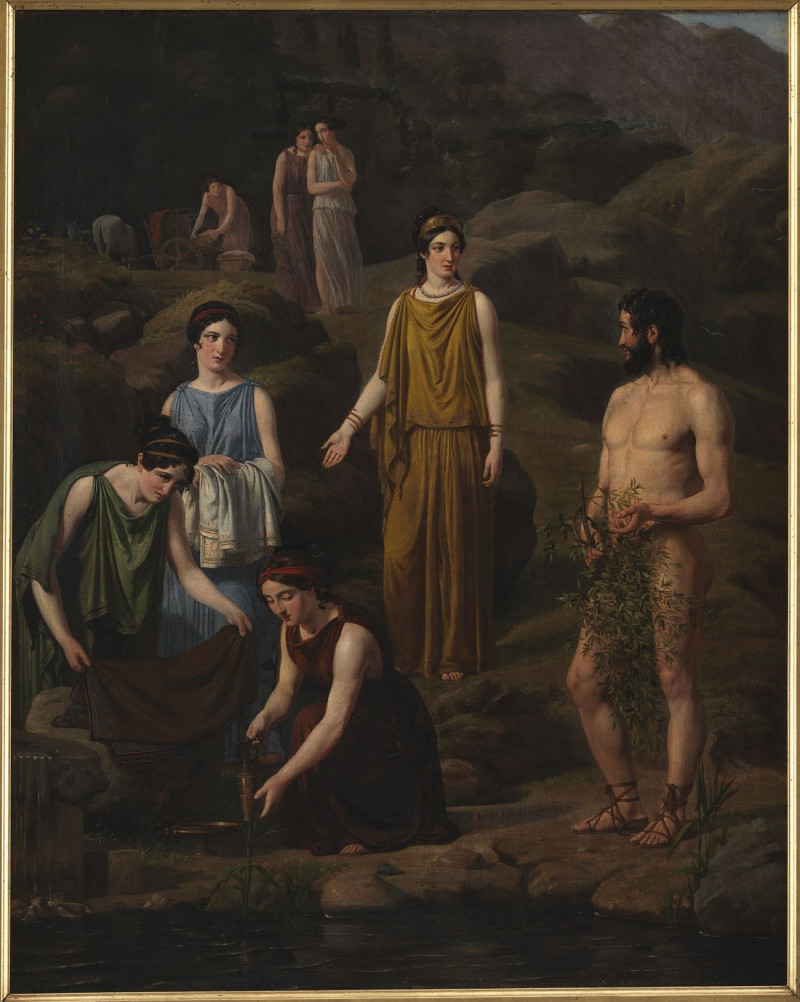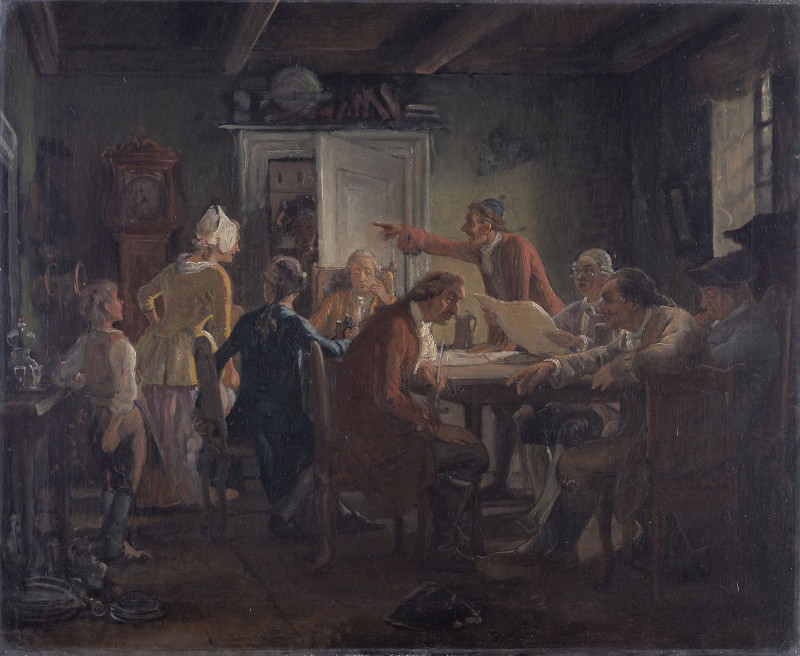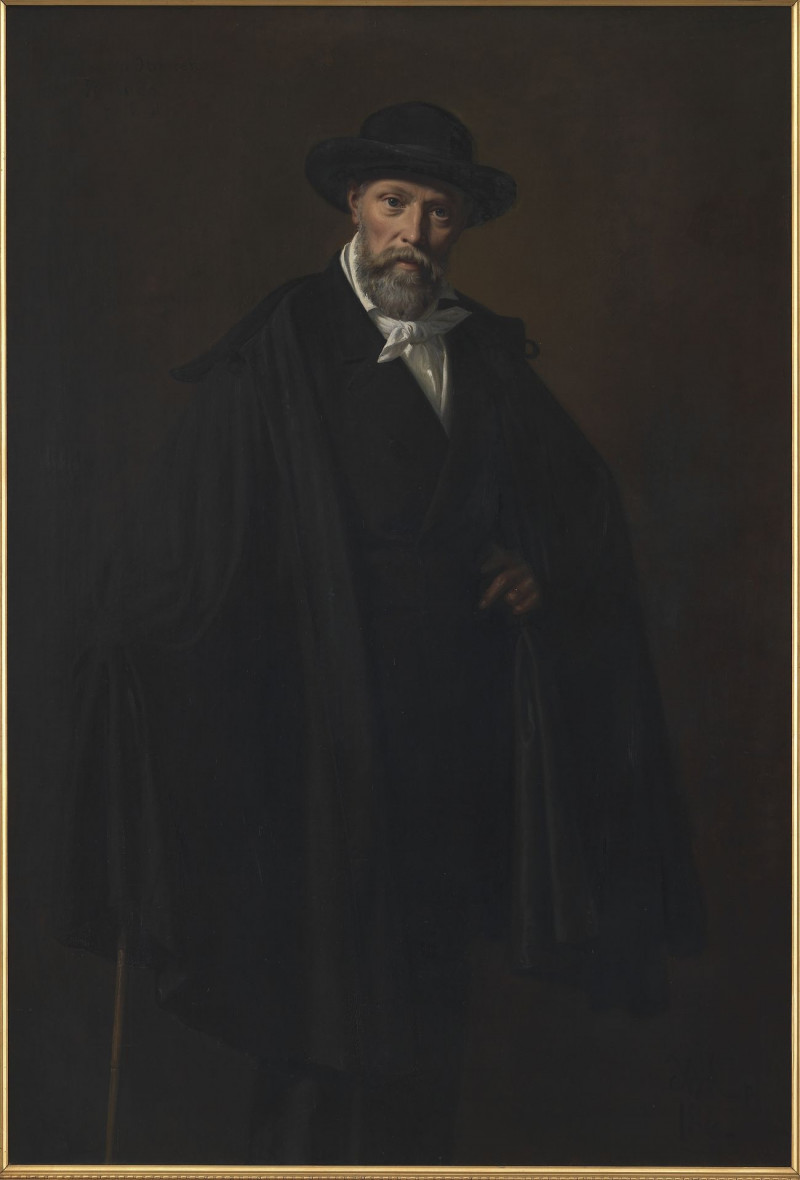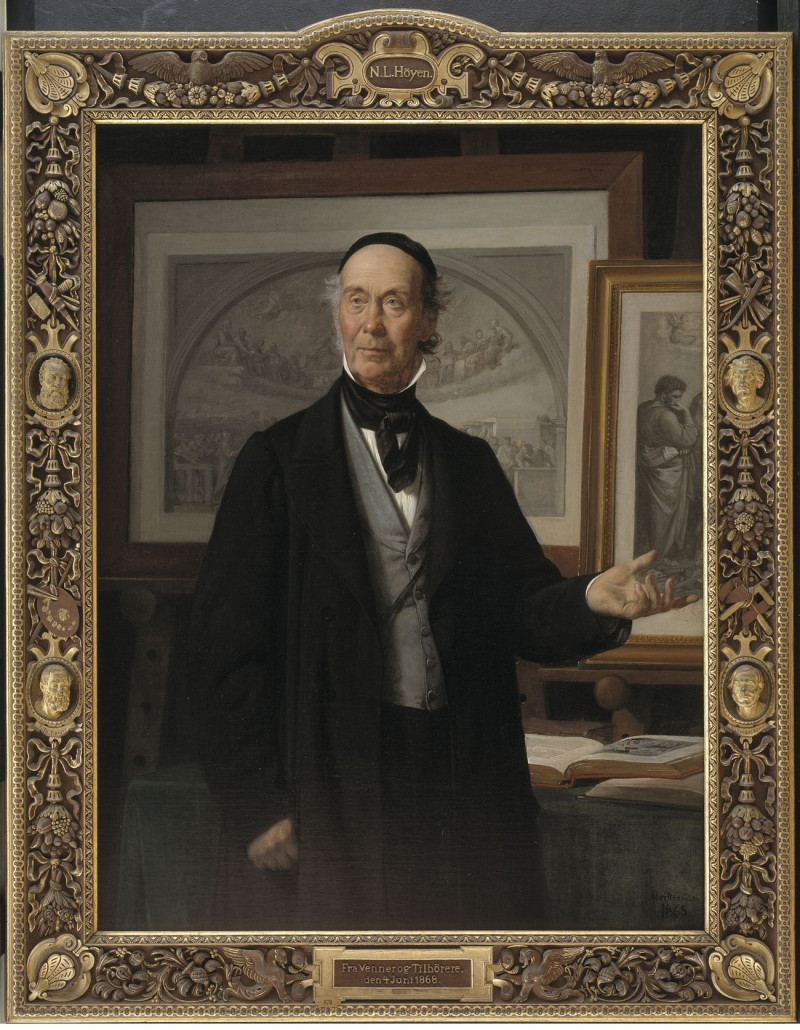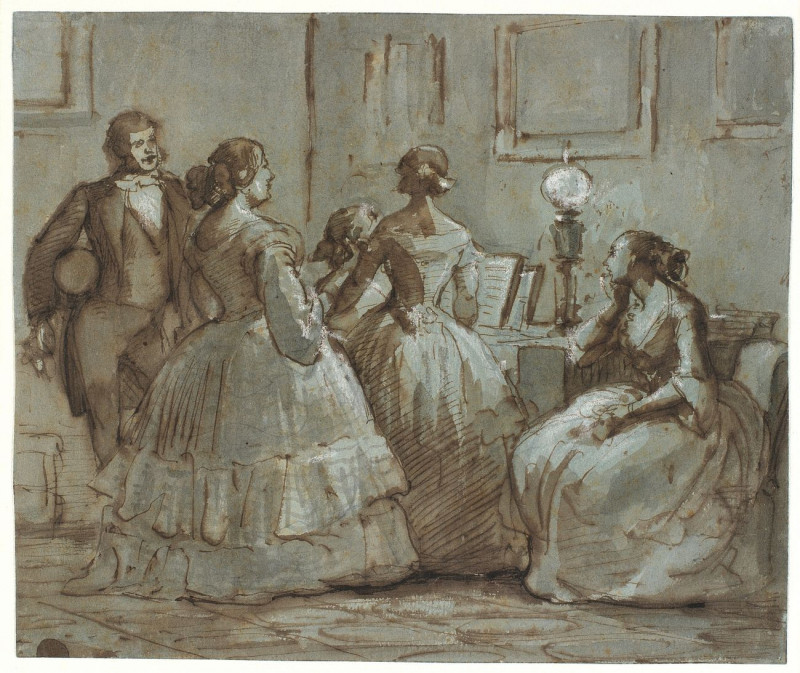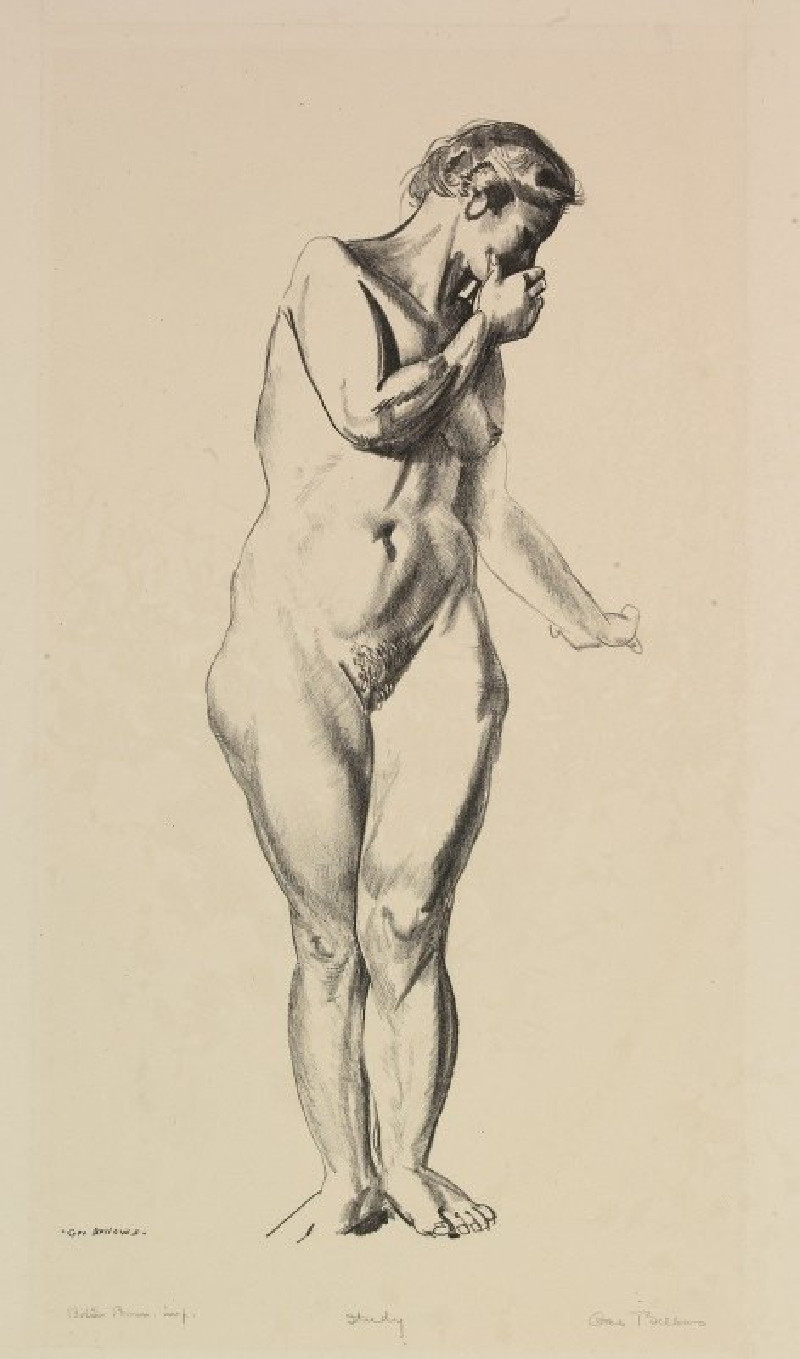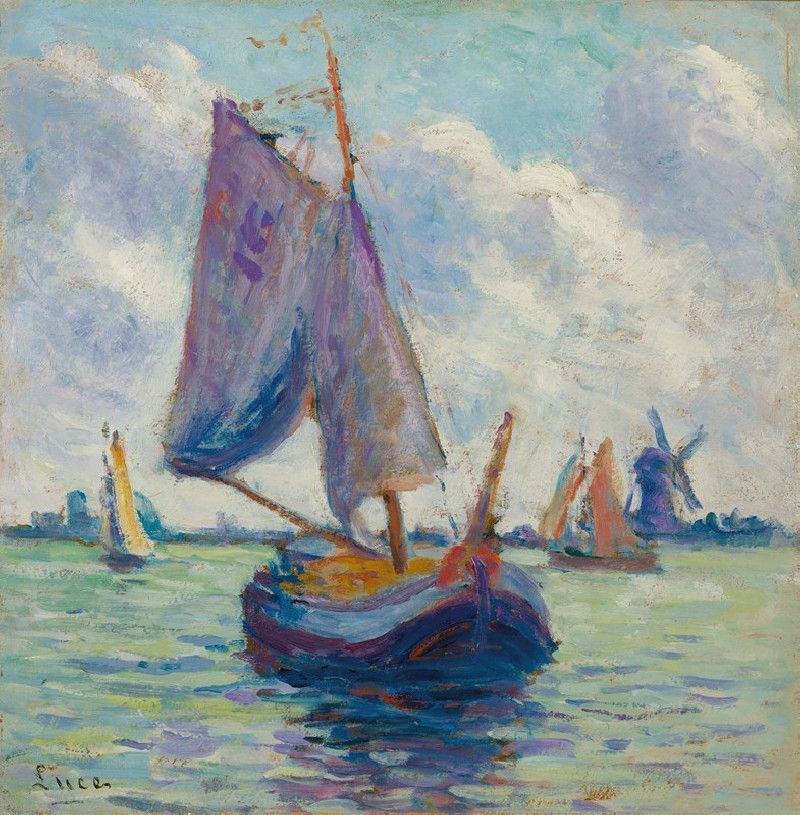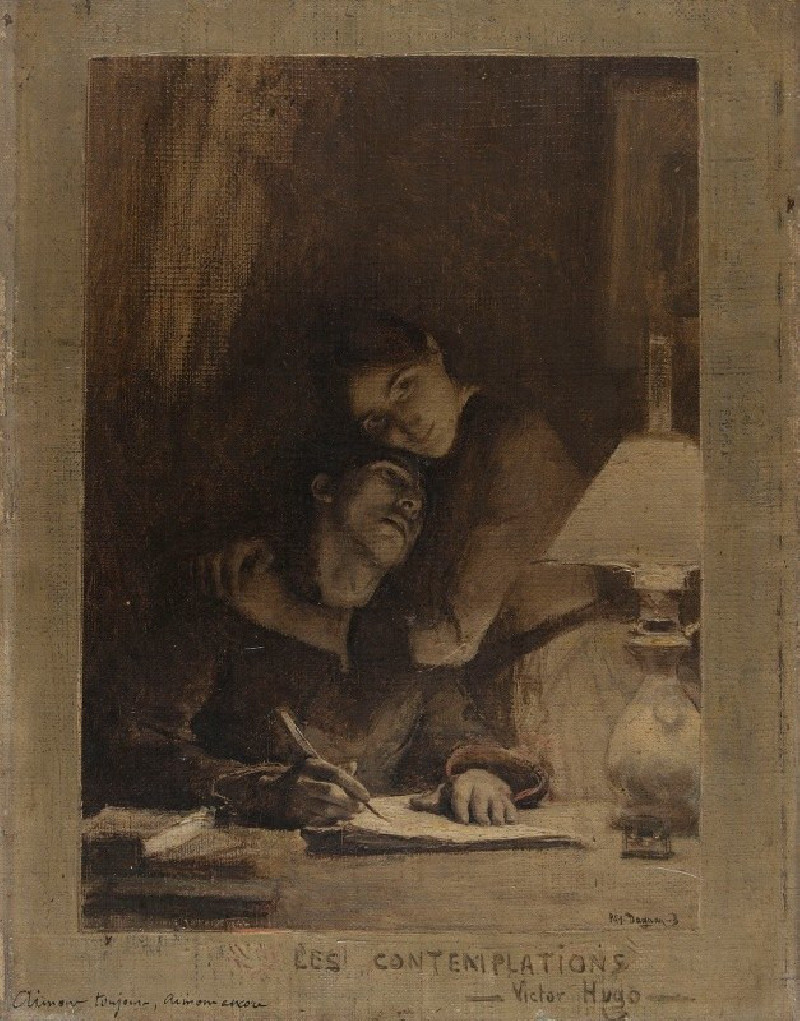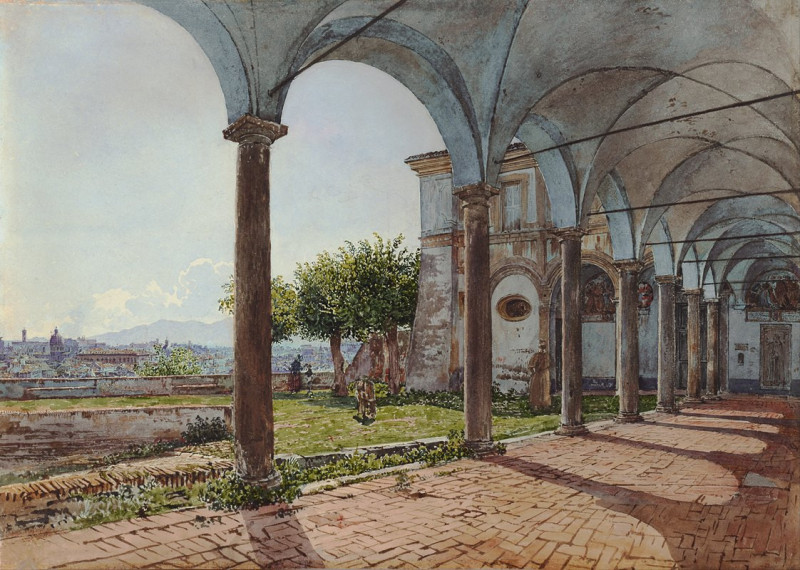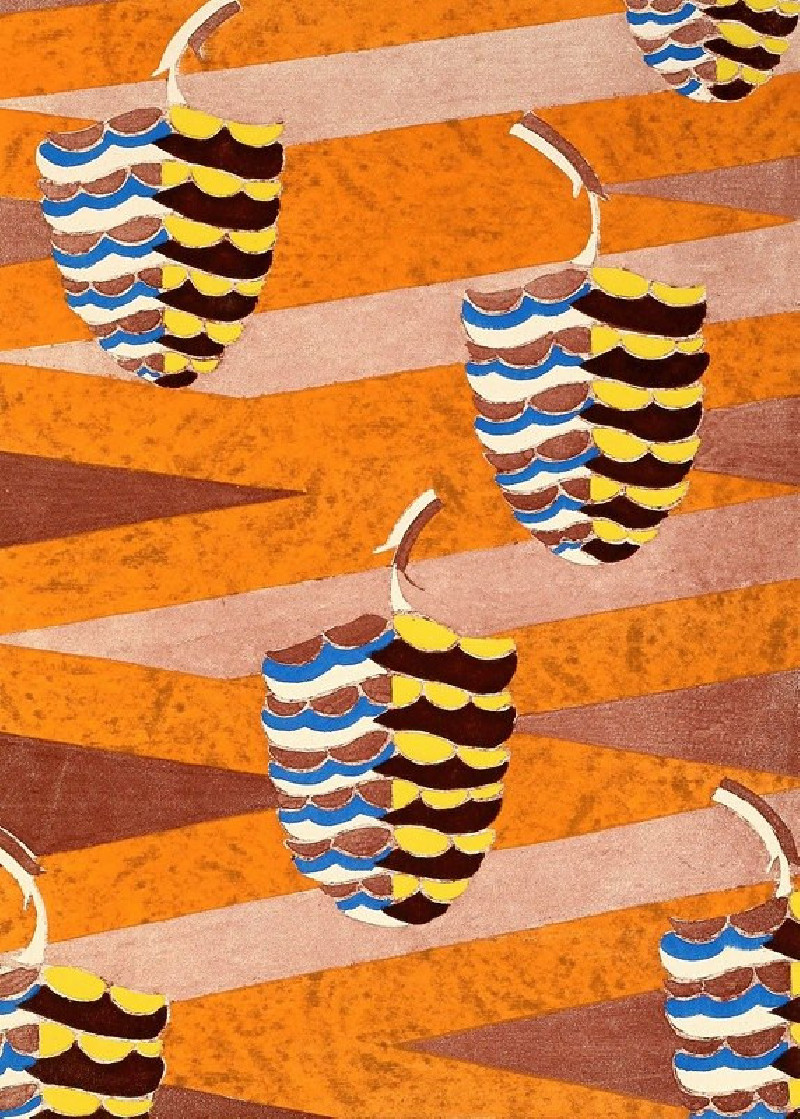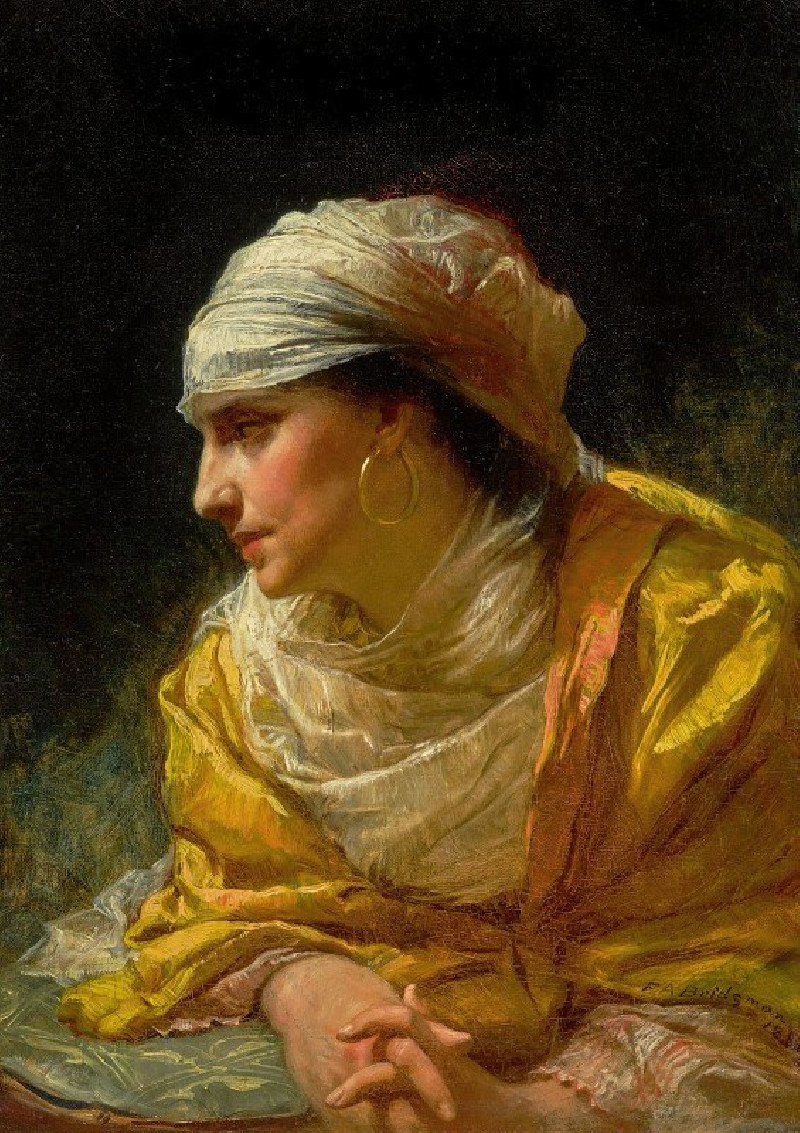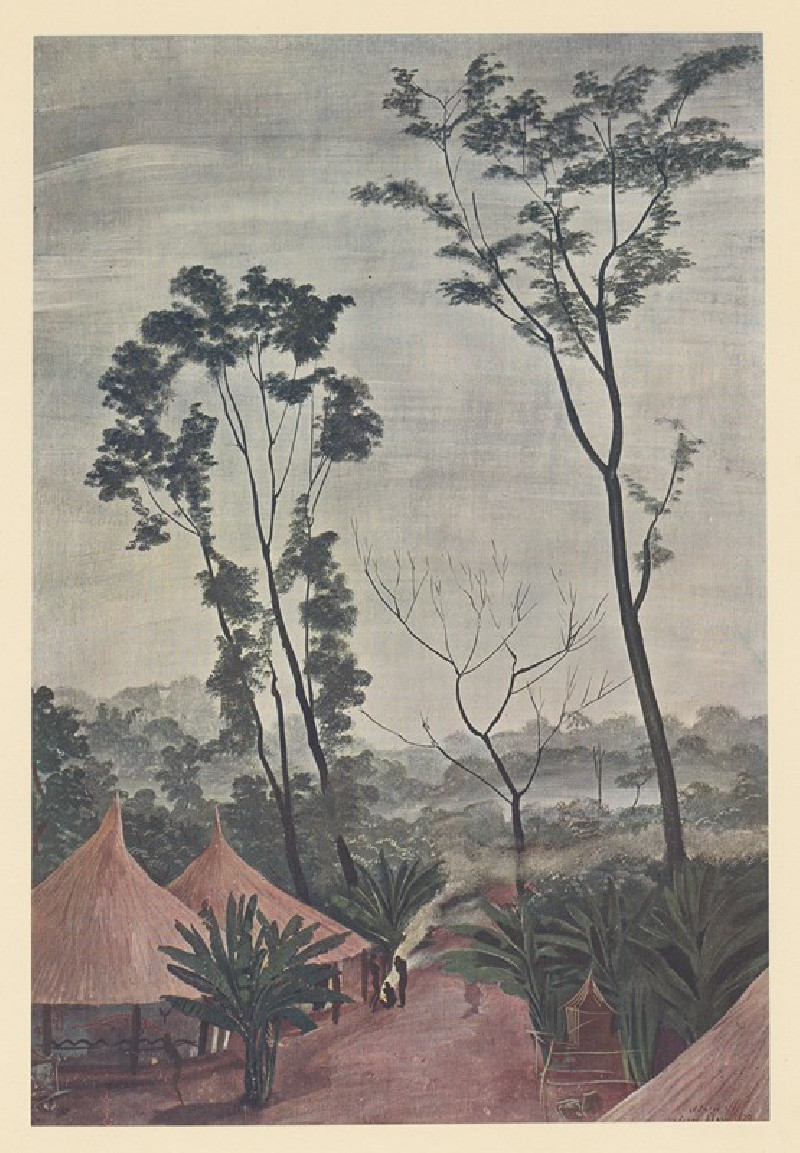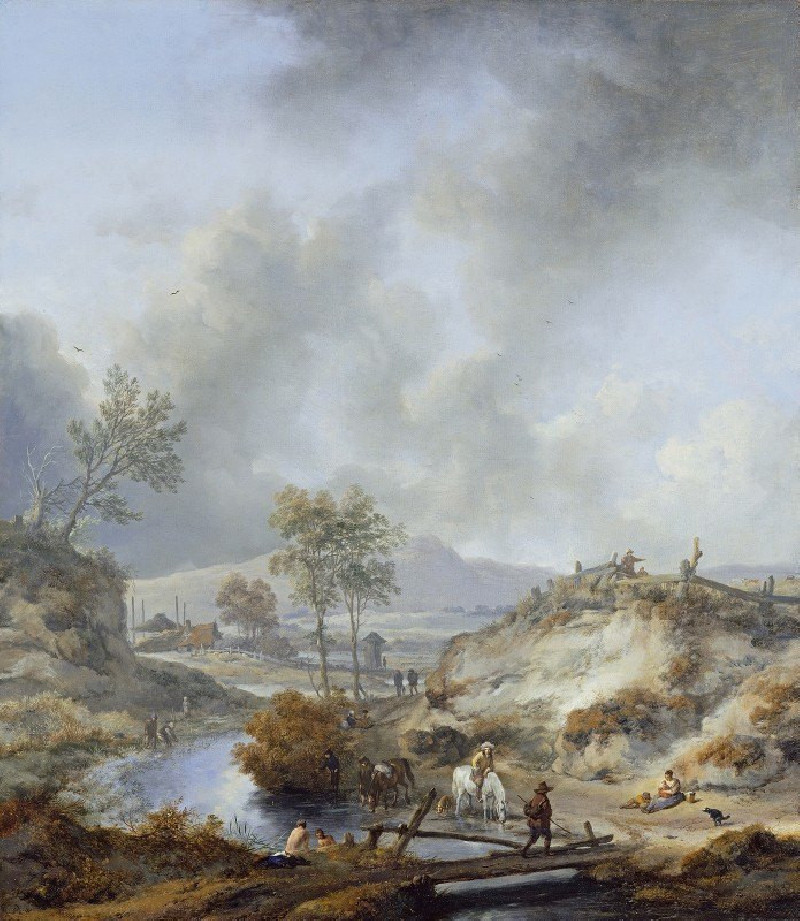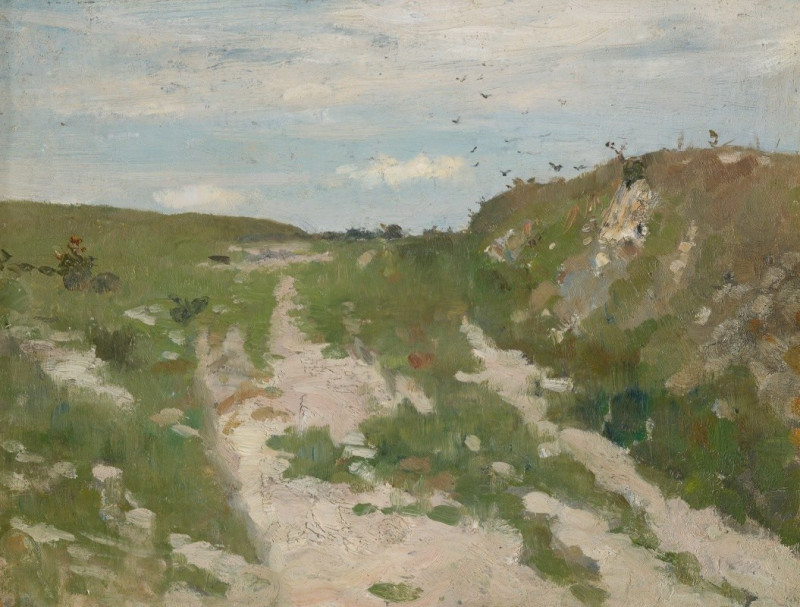A Street Scene In The Dog Days
Technique: Giclée quality print
Recommended by our customers
More about this artwork
The painting "A Street Scene In The Dog Days" by Wilhelm Marstrand vividly depicts a bustling street scene, filled with an array of characters and activities that convey a sense of lively, somewhat chaotic urban life. Set against the backdrop of a European city, possibly Copenhagen, the scene is anchored by a large, dark net held by two men, drawing immediate attention. This net, almost theatrical in its presence, adds a dramatic and slightly humorous element to the scene.In the foreground, multiple dogs of varying sizes and breeds interact and add to the chaotic feel of the scene. One man in the center stands out, holding a fluffy white dog that shows unease, possibly overwhelmed by the boisterous surroundings. Near him, another prominently featured man appears controlling the net, directing the scene's focus. There's a sense of motion and noise suggested by the faces and postures of the crowd, ranging from children to adults, reflecting a snapshot of society.The buildings and the cobblestone street lend authenticity and a historical essence to the setting, with detailed architectural elements and window scenes. Various onlookers poke their heads out of windows, pulling the viewer's eye upwards and adding layers to the scene.Marstrand’s work here is rich in narrative, invigorating the everyday with a sense of eventfulness and highlighting the interaction between humans and animals in public spaces, all under the sultry sky of the dog days of summer.
Delivery
Returns
Depiction of middle-class family scenes and historical paintings by Danish Golden Age artist Wilhelm Marstrand (1810-1873). Marstrand was known for his depiction of middle-class family scenes and historical paintings, with a focus on genre painting and literary subjects. He was also a skilled portraitist, often commissioned by European families to create portraits. After spending time in Italy, Marstrand began to incorporate humorous and ironic elements into his narrative paintings and illustrations, offering a unique perspective on Italian folk life.


